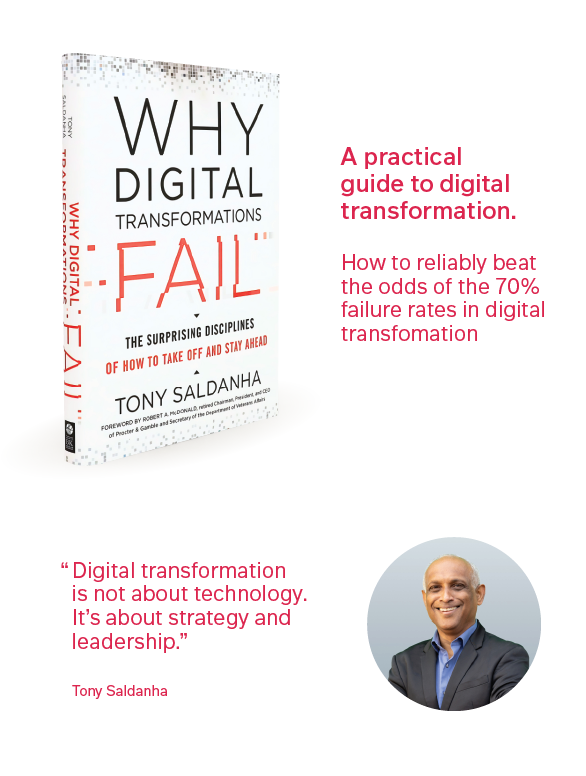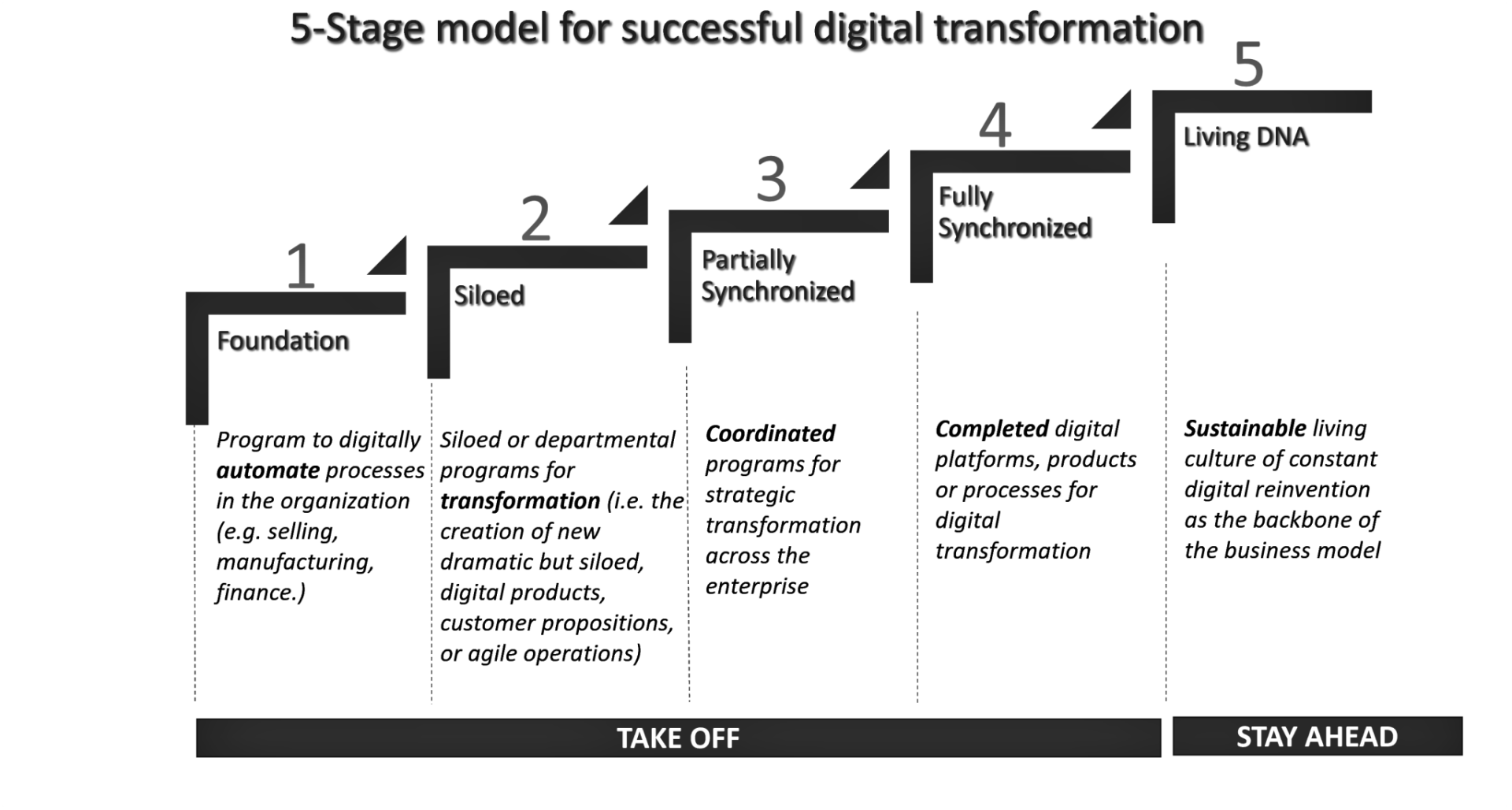Why Digital Transformations Fail: A Book Review by Arno Ham


Why digital transformations fail
Former CIO of Proctor and Gamble, Tony Saldanha, starts with an eye-popping premise: 70% of digital transformations fail. The labor of his book is to not only figure out the “whys” of this failure, but also to provide an antidote that companies and leaders can follow.
My first question upon reading this stat was, “what does it mean to fail at digital transformation?” Tony Saldanha takes failure to mean the inability to migrate effectively from the previous era of electronic-powered business (think telephones, email, fax) to a fully digital business where the physical and digital are seamlessly melded.
In short, it is the failure to, as Tony puts it, “take off and stay ahead; to launch a change and sustain it, rather than let it wither on the vine.
Failure comes in many varieties – product launch, technology adoption, bankruptcy – and Tony uses numerous examples as both cautionary tales and paragons to uphold.
Examining all these failures, Tony Saldanha ultimately determines that failure can be rooted in one concept: lack of discipline. This ill-disciplined execution, rather than the novelty or power of the new technology per se, is what dooms a digital transformation to failure.

The five stages of digital transformation – where your company lies
The bulk of Tony’s book focuses on the five-stage maturity company onto which companies can map themselves based on their development.
The stages are:
- Foundation – Automation of processes
- Siloed – Organic development of digital processes in parts of an organization
- Partially Synchronized – Partial completion of a company-wide digitization program
- Fully Synchronized – Major, company-wide digitization has taken root
- Living DNA — Perpetual transformation; company has become a market leader
The book dedicates two chapters to each stage, with each chapter being organized around a historical anecdote that serves as the topic’s conceit. For example, chapter nine, digital reorganization asks the question, “is your IT function a piston engine or a gas turbine engine?”
The key takeaways come at the end of the chapter, where Tony Saldanha provides frequent wrap-ups and checklists that organizations can use to mark their progress. I particularly liked that each stage identified points of failure at each stage of transformation, as well as disciplines to hedge against failure – though some of the takeaways seemed surface level. Stage 3’s cause of failure? Ineffective change management strategy. Correct discipline to implement? Implement and stick to a change management model.
Want a free copy of Tony’s book?
Want a free copy of Tony’s book?
Join our New Sana Book Club 2025.

Why this book resonated with me

Manufacturers and distributors, the very industries we serve, face immense product and channel complexity. A new commerce portal is not a “project” you launch and walk away from. It is a continuous transformation in how professionals buy and sell, how customer experience is delivered by solving complexity and migrating or blending it from the physical world to the digital world, and how efficiency is unlocked across the supply chain.
Reading Tony Saldanha’s book, I realized that many of these businesses fit between steps 2 and 3 of the digital transformation maturity model; they have burgeoning initiatives, but they are fragmented and not woven throughout the entire company. Too often, we see businesses focus on feature rollouts rather than embedding digital thinking into the DNA of how sales, marketing, and operations work together.
Tony Saldanha focuses on two industries that have seen major improvements in turning high fail rates into high success rates: medical and aviation. He credits these turnarounds to rigid discipline and adherence to checklists. By applying this “pre-flight checklist” mentality to digital evolution, businesses can increase the odds that their transformations will stick.
At Sana Commerce, our mission is to transform how professionals buy and sell, and that aligns perfectly with Saldanha’s insight that transformation is not about IT, it is about people and processes. What struck me most is his insistence that organizations must move beyond automation to synchronization: every department, every leader, every process pulling in the same direction.
When I think about our customers, companies balancing traditional sales channels with modern B2B commerce, the lesson is clear: true digital transformation means building commerce into the culture, not just the website.
All businesses endeavoring to make transformation stick would benefit from reading Saldanha’s book. It may be the launch they need to “take off and stay ahead.”

About Tony Saldanha
Tony Saldanha, former CIO at Procter & Gamble, is an expert and thought-leader in Global Business Services, who was named on Computerworld’s Premier 100 IT Professionals list in 2013.
His book, Why Digital Transformations Fail, ranked #1 on Amazon’s New Releases for Organizational Change. Forbes contributor Michelle Greenwald called it the “best business book ever that you’re yet to read”.
Our exclusive Live Book Review on November 6th with Tony Saldanha
Our exclusive Live Book Review on November 6th with Tony Saldanha
Be Part of the Live Author Session with the author of “Why digital Transformations Fail”. Save your seat today!

More interesting resources
More interesting resources


